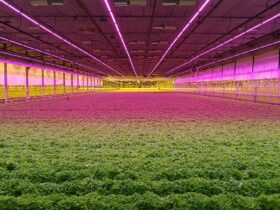Hyper-pressed brick is becoming the best cladding material today.. Therefore, it is worth learning more about him..
History
This material appeared a long time ago, back in the era of the development of the Roman Empire, and maybe much earlier. It was very convenient for the ancient people to build dwellings not from stone, but from brick, which had the correct shape and retained heat better. In addition, the production was already easier then than the extraction of stone: they just kneaded a solution of the required composition and consistency, poured into molds and fired in an oven..
At first, bricks were made solid, from a mixture of clay and straw by firing. In this way, the so-called adobe was obtained. Later, they began to simply burn a clay solution in special forms. This is how a red ceramic brick was made. Since the Middle Ages, it has become the main material for the construction of houses..
The last to appear was white sand-lime brick. No clay was added to it, but a product was formed from a lime solution. Now, concrete mortar can be used as a material for bricks, sometimes with various additives..
The shape of the brick is the same, but the size and weight are different. Today there is a tendency to make it with holes throughout the thickness. This technology reduces the consumption of material for the product and its weight, while the thermal insulation characteristics remain unchanged. And with the help of various additives, you can increase the frost resistance and strength of the product..
It is believed that facing bricks appeared abroad, where there was a need to give buildings an aesthetic appearance. Initially, these were hollow objects made of baked clay. The shape could be different: rectangular, round, trapezoidal. Naturally, the color was characteristic of the ceramics: from brown to brown.
Later, concrete and silicate mortars were used as a material for facing bricks. The products were colored by the following methods:
coating the product with colored enamel;
introduction of a color of the required shade into the solution;
finishing the outer part of the brick with a pigment of the required color.
Today, the types of finishing bricks are diverse: it can be of various shapes, colors, the texture of the outer side can be decorated with a different material, for example, stone. The general qualities for him, both in ancient times and now, are high strength, resistance to the sun, low temperatures and high humidity. This is an excellent material for home insulation..
Recently, the so-called hyper-pressed brick has appeared on the market. What is it?
Hyper-pressed brick is a material made in a semi-dry way using a special technology. The technology of its production was developed in Europe as part of the search for cheaper and optimal materials for construction..
In Europe, it is an affordable building material that is not inferior in its properties to ordinary bricks and other facing materials. In Russia, not many people produce hyper-pressed products yet. One of such companies that has achieved significant success in this area of production is RuBelEko LLC, the plant produces hyper-pressed facing bricks and facade tiles in 6 color options. In addition, as mentioned above, this is a waste-free production, since waste stone is usually used for manufacturing..
Production technology
According to the production technology, hyper-pressed brick resembles silicate brick. However, there are some very important differences..
Very little water is added to the production solution (the moisture content of the mixture is up to 10%). This mixture is called semi-dry..
The filler takes up a significant part of the solution by volume. Usually these are various types of stone, but there may also be production waste. Any stone material of various shapes and sizes is suitable.
The manufacturing process uses pressure.
That is, for the production of hyper-pressed bricks, a solution based on stone waste is mixed, a small part of water and a pigment of the required color are added there. The mixture is poured into molds and subjected to high pressure (hundreds of atmospheres). After the initial pressing, the product is left to cure. In order for the brick to receive the required strength value, 28 days must pass. For accelerated production at the stage of pressing, the products are additionally treated with wet steam..
Characteristics of hyper-pressed bricks:
almost perfect shape without external defects;
high structural density (it is heavier than a solution);
strength in the range of 150-450;
high frost resistance;
2 release options: solid and hollow;
various variations of the brick shape. This is usually a standard rectangular one, but it can be any;
absolutely smooth and even outer surface;
possibility of design «like a stone» due to special processing of the outer surface.
Author of the article: representative of the Moscow company «RuBelEco RUS»

















Оставить коммент.